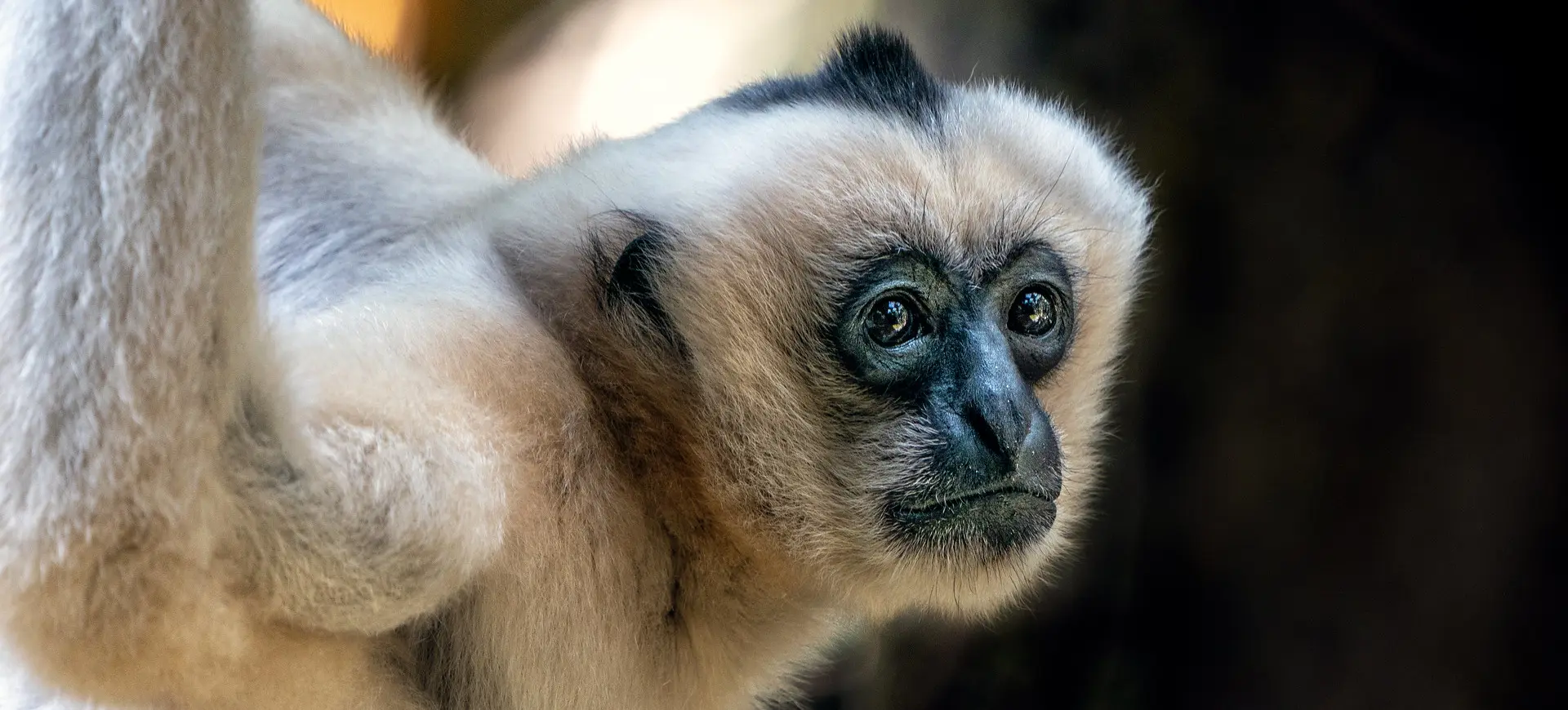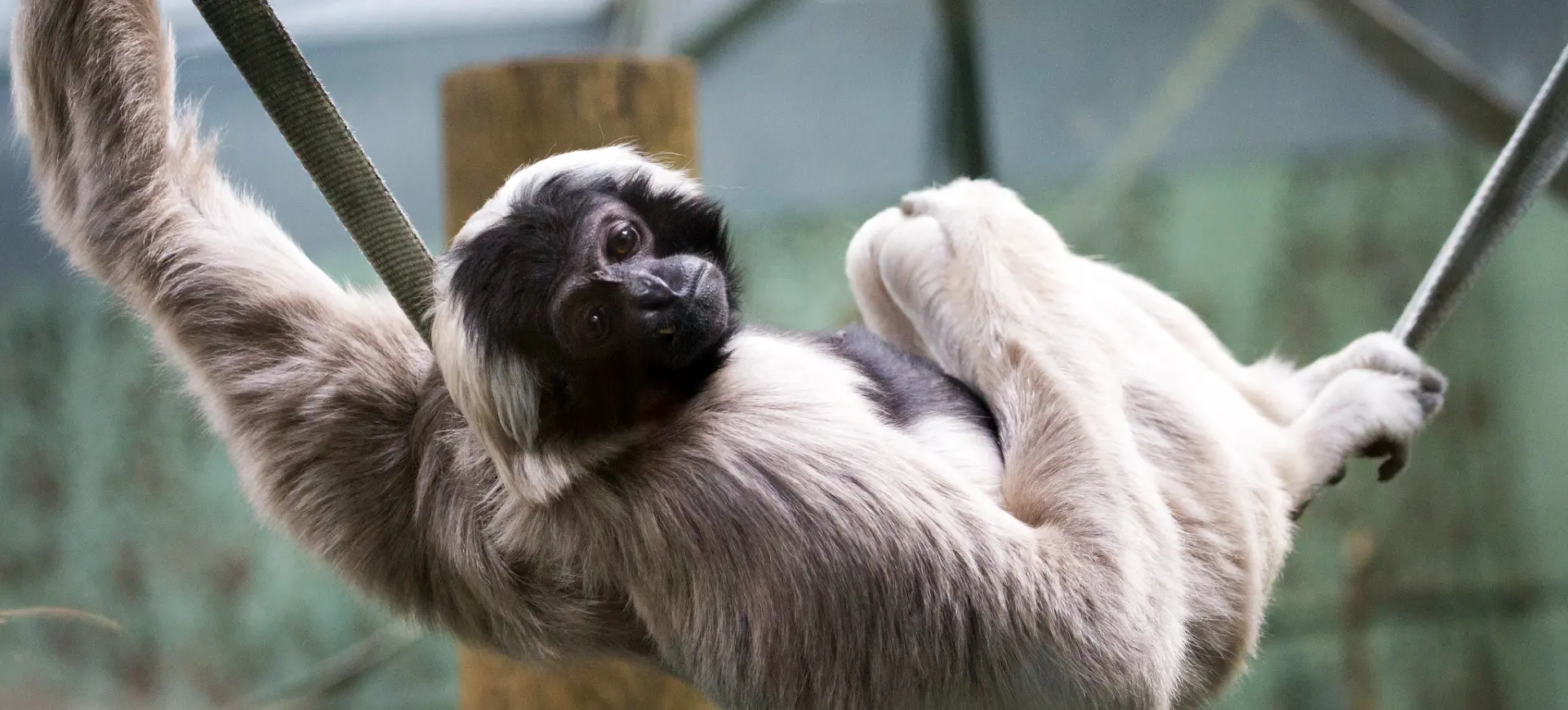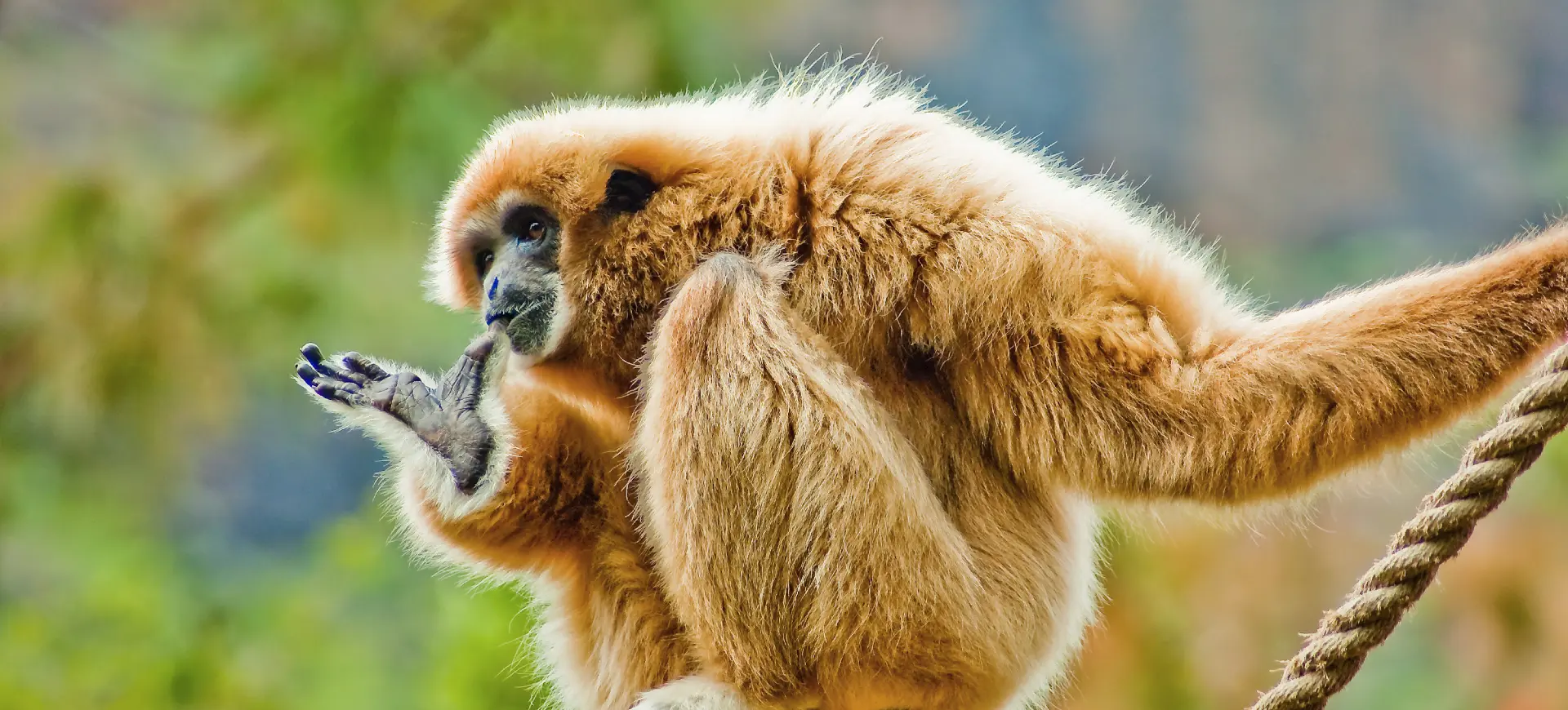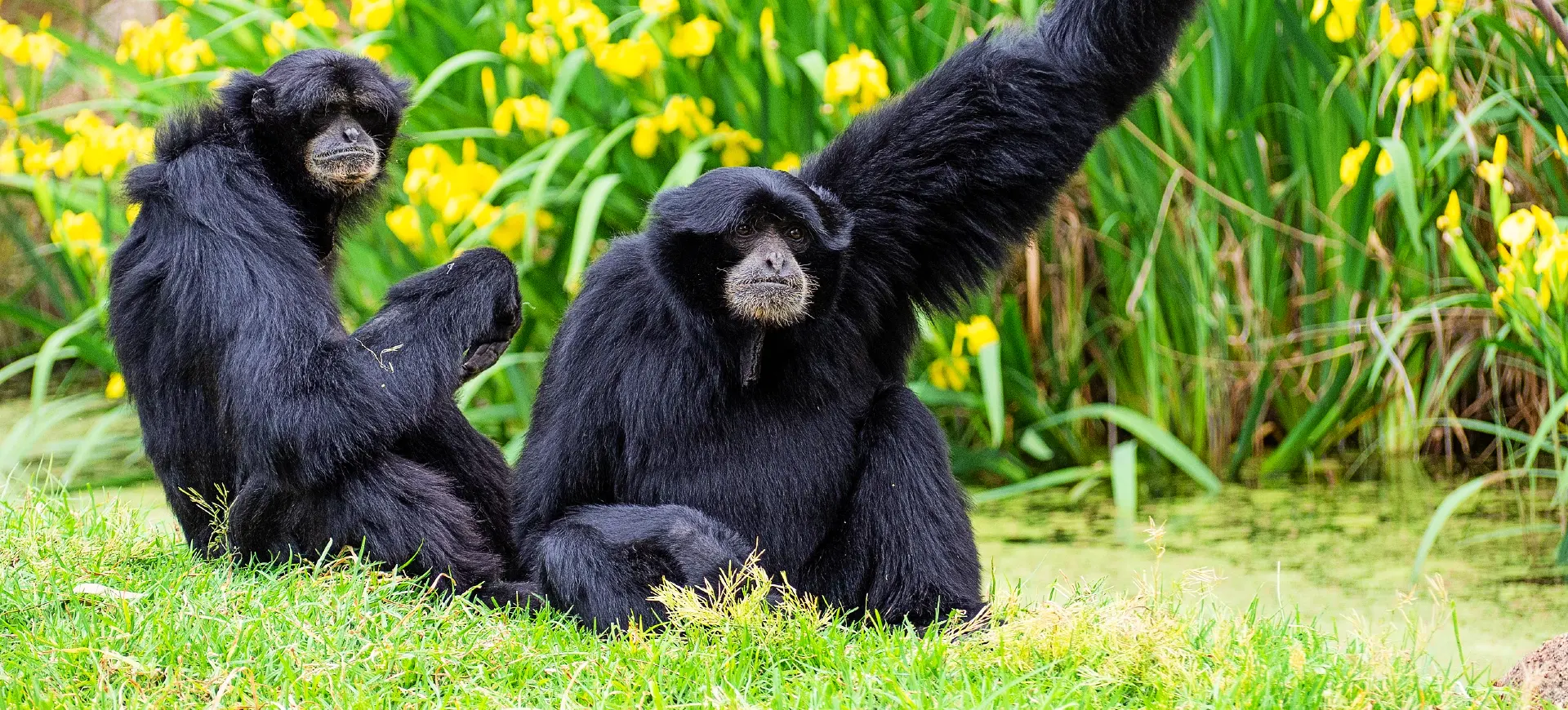Overview
Müller’s Bornean gibbon (Hylobates muelleri), also known as Müller’s gibbon or the grey gibbon, is a primate species belonging to the family Hylobatidae. Like all gibbons, they are agile arboreal creatures with remarkable swinging capabilities, enabled by their long, strong arms. They reside in the tropical rainforests of Borneo, where they occupy the high canopy and rarely descend to the forest floor.
Müller’s gibbons are known for their unique duetting vocalizations that echo through the rainforest. The duets, typically a combination of male and female calls, serve various purposes, including mate attraction, territorial defense, and strengthening pair bonds. They exhibit sexual dimorphism in both physical features and coloration.
Like other gibbon species, Müller’s gibbons are monogamous and live in small family groups consisting of a mated pair and their offspring. Their diet consists mainly of fruits, leaves, and occasionally insects. However, despite their adaptability and survival skills, these gibbons face numerous threats, including habitat loss due to deforestation and illegal hunting, contributing to their status as endangered.
Taxonomy
Kingdom
Phylum
Class
Order
Family
Genus
Species
Type
Physical Description:
Müller’s gibbons are small, agile primates with a compact body, long arms, and short legs, a physical build specialized for a life spent in trees. They have hook-like hands perfect for gripping branches and a lack of tail, a common characteristic among apes. Their fur color varies from black and dark-brown to light-brown, grey, and buff. A distinctive feature is a white or grey browband, contrasting with their dark fur.
Sexual dimorphism is present, with males generally darker than females. Additionally, the size of males and females is similar, with males being slightly larger on average. Their expressive faces feature high cheekbones and large, dark eyes that convey various emotions.

Lifespan: Wild: ~30 years || Captivity: ~40 years

Weight: Male: 12.5 lbs (5.7 kg) || Female: 11.9 lbs (5.4 kg)

Length: Male: 17-18 in (43-46 cm) || Female: 16-17 in (41-43 cm)

Height: Male: 17-18 in (43-46 cm) || Female: 16-17 in (41-43 cm)

Top Speed: 34 mph (55 km/h)
Characteristic:
Native Habitat:
Müller’s gibbons are endemic to the island of Borneo, where they inhabit primary and secondary forests, lowland and montane, up to an altitude of about 1500 meters. These gibbons are highly arboreal and rarely descend to the ground. They occupy canopy territories where they feed, sleep, and mate. These gibbons prefer undisturbed forests but can also be found in regenerating logged forests, displaying some adaptability to habitat changes.
Climate Zones:
Biomes:
WWF Biomes:
Biogeographical Realms:
Continents:
Countries:
Diet:
Diet & Feeding Habits:
Müller’s gibbons are primarily frugivores, with fruit constituting a major portion of their diet. They prefer ripe and sugary fruits, supplying them with the energy necessary for their active lifestyle. Their long, slender fingers are well-suited for plucking fruit from branches.
However, their diet isn’t strictly limited to fruits. They also consume young leaves, shoots, flowers, and occasionally insects and bird eggs. They forage in the forest’s upper canopy, using their exceptional agility and hand-eye coordination to traverse the dense foliage in search of food.
Mating Behavior:
Mating Description:
Müller’s gibbons are monogamous, and pairs mate for life. Courtship includes mutual grooming and vocal duets that serve to strengthen pair bonds. They breed year-round, but births peak when food is most abundant.
Females give birth to a single offspring every two to three years after a gestation period of about seven months. Infant care is primarily the mother’s responsibility, who nurses the offspring for about two years. However, other family members, including the father and older siblings, will also interact and play with the young gibbons.
Reproduction Season:
Birth Type:
Pregnancy Duration:
Female Name:
Male Name:
Baby Name:
Social Structure Description:
Müller’s gibbons live in small, monogamous family units consisting of a mated pair and their offspring. They are territorial and use their distinct vocalizations to assert their territory boundaries and ward off other gibbons. The family unit is strong, with older siblings often assisting in caring for younger ones.
Groups:
Conservation Status:
Population Trend:
The wild population of Müller’s gibbons is unknown but is assumed to be declining due to rampant habitat destruction and hunting pressures. Pockets of populations exist in protected areas but are often isolated due to deforestation, leading to genetic inbreeding. Their population is not well-documented in captivity, but they can be found in several zoos worldwide as part of conservation breeding programs.
Population Threats:
Müller’s gibbons face severe threats primarily from habitat loss due to logging, forest conversion to agriculture, and fires. These activities fragment their habitat, isolating populations and disrupting their social structure. They are also threatened by hunting for the pet trade, and in some regions, for food. Climate change also poses an emerging threat, potentially altering their forest habitat.
Conservation Efforts:
Müller’s gibbons’ conservation efforts focus on habitat protection and anti-poaching measures. Several protected areas have been established within their range, and law enforcement efforts have been strengthened to deter illegal hunting and trade. Public education campaigns are also implemented to raise awareness about their plight. Ex-situ conservation efforts include captive breeding and rehabilitation programs.
Additional Resources:
Fun Facts
- Müller’s gibbons are known for their loud and melodious duets, which can be heard up to a kilometer away in the forest.
- They are one of the few monogamous primates.
- Despite spending most of their lives in trees, Müller’s gibbons are good swimmers.
- They are incredibly agile and can swing through the trees at high speeds, a form of movement known as brachiation.
- Their call can change based on their geographical location and subspecies.
- Müller’s gibbons can live up to 40 years in captivity, which is considerably longer than their typical lifespan in the wild.
- They have a unique ‘brow-band’ on their forehead, a key distinguishing feature.
- Unlike many primate species, Müller’s gibbons do not have tails.
- They have a varied diet but show a particular preference for ripe, sugary fruits.
- Despite their small size, Müller’s gibbons play a vital role in their ecosystem, including seed dispersal, which helps maintain the diversity and health of their rainforest habitats.








